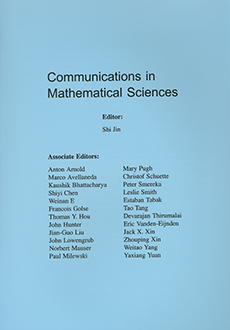Abstract
Viscous stabilizations of the quantum hydrodynamic equations are studied. The quantum hydrodynamic model consists of the conservation laws for the particle density, momen- tum, and energy density, including quantum corrections from the Bohm potential. Two different stabilizations are analyzed. First, viscous terms are derived using a Fokker-Planck collision operator in the Wigner equation. The existence of solutions (with strictly positive particle density) to the isothermal, stationary, one-dimensional viscous model for general data and nonhomogeneous boundary conditions is shown. The estimates depend on the viscosity and do not allow to perform the inviscid limit. Second, the numerical viscosity of the second upwind finite-difference discretization of the inviscid quantum hydrodynamic model is computed. Finally, numerical simulations using the non-isothermal, stationary, one-dimensional model of a resonant tunnelling diode show the influence of the viscosity on the solution.
Citation
Ansgar Jüngel. Jospa Pina Milišić. "Physical and numerical viscosity for quantum hydrodynamics." Commun. Math. Sci. 5 (2) 447 - 471, June 2007.
Information





